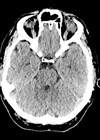Vishal Shah and his co-authors reflect on examples of innovation in eyecare delivery published in the last year and the implications for the future of eyecare services.
The “new normal” is an overused phrase to describe extraordinary measures that have been required to deliver eyecare in the context of the global COVID-19 pandemic. Many of these changes have proved to be safe, effective and convenient for patients and are likely to be here to stay. In this article, we consider examples of innovation in eyecare delivery published in the last year and the implications for the future of eye care services.
Innovative services
The development and implementation of the COVID-19 Urgent Eyecare Service (CUES) in Greater Manchester represents a real-world interpretation of the recommendations made by the Royal College of Ophthalmologist (RCOphth), NHS England and other stakeholders for maintaining safe urgent eyecare during the pandemic. It was made possible by primary care optometrists operating within pre-negotiated commissioning frameworks that allowed expansion of collaborative ways of working [1]. In their service evaluation of 2461 patients, Kanabar et al. found that of all the consultations undertaken, almost half (47%) could be managed without face-to-face review in secondary care [2]. In keeping with this, the case-mix of patients seen by the main provider’s emergency eyecare department (EED) was consequently more complex than that seen prior to CUES, indicating a more appropriate use of secondary care time and resources for patients who really cannot be managed outside that setting.
A key aspect of the CUES model is moving the initial point of care closer to the patient. Man and colleagues took this concept one step further in their implementation of a comprehensive eyecare service for those in residential care in Australia [3]. In this multicentre prospective randomised control trial (RCT), 178 participants from 38 aged-care facilities were randomised to receive either usual care, i.e. referral to external eyecare provider or “residential ocular care” (ROC), a comprehensive on-site eye examination and care rehabilitation. ROC was found to improve clinical visual outcomes such as near vision and importantly, quality of vision and emotional wellbeing (all p<0.05). The authors acknowledge the need for further work to better understand the cost implications of such a bespoke service, however, given the potential benefits of reducing falls and costs of travel, such frontloaded investment could in theory reduce costs down the line. Such approaches are a key theme of the NHS Long Term Plan which will direct the future landscape of care in the UK [4].
Innovative use of staffing
Todd et al. carried out a prospective study [5] in which they explored how the decision-making of independent prescribing (IP) optometrists matches up with that of consultant ophthalmologists in an EED and represents one of the first studies of its kind. Analysis of more than 300 patients found excellent concordance between IP optometrists and consultants, with the greatest agreement found for “diagnosis” (K=0.88) and “onward management” (K=0.82), while that for “prescribing decision” was a fraction lower, at K=0.75. These figures validate the role of the IP optometrist and represent an exciting prospect for the staffing of urgent eyecare services of tomorrow.
A more radical example of the utilisation of staff in nonconventional roles can be found in work from El-Khayat et al., in which ophthalmic photographers conducted virtual medical retina (MR) clinics and made management decisions [6]. In this study, three photographers were trained to manage macular oedema due to diabetes or vein occlusion. Of the 300 patients included, there was a 100% concordance with the ophthalmologist’s plan and no reported adverse incidents.
Innovative use of existing technology
Virtual clinics are an important delivery mechanism for chronic eye conditions, particularly medical retina and glaucoma, allowing more patients to be seen in these services. Faes et al. present impressive data to demonstrate how a “virtual first” set up, in which all diabetic eye screening programme (DESP) referrals are triaged to either face-to-face (F2F) or virtual at the point of receipt, can assist in reducing overall F2F clinic demand [7]. In this study, over 12,500 DESP referrals to Moorfields Eye Hospital were retrospectively analysed. The mean time taken from routine referral to initial assessment in the virtual first arm was shorter, and this meant that discharge back to the community from first visit was also sooner at 71 vs. 87 days for those seen F2F (all p<0.001). There was no difference in mean time to treatment for patients requiring intravitreal therapy for maculopathy and non-inferiority in terms of attendance rates. This builds on previous work by Jun et al. that found use of optical coherence tomography (OCT) to screen all diabetic macular oedema (DMO) referrals from DESP resulted in almost half (47%) being discharged directly back to screening without the need for a clinic visit [8].
Innovative use of newer technology
As highly respected authorities in this field, Pearse Keane and Eric Topol recently commented that artificial intelligence (AI)-enabled healthcare is approaching a pivot point, “akin to that reached by the computer industry in the late 1970s” [9]. With this in mind, the importance of work by Heydon et al., utilising a prospective AI-enabled algorithm for automated DES across three centres, can be appreciated [10]. Analysis of more than 30,000 patients demonstrated the algorithm to have safe levels of sensitivity for high-risk retinopathy (95.7%) and moderate to severe non-proliferative diabetic retinopathy (NPDR) (100%). Overall, the algorithm’s false positive rate was found to be just under half (46%). The authors anticipate that, of all cases screened by this algorithm, only 50% of episodes would require further human grading, without any sight-threatening disease being missed. This represents a potential major cost saving by relieving humans of the labour-intensive task of reviewing images with no or only mild NPDR, allowing them to focus on images with “at risk” features.
Summary
The innovative services outlined in this article demonstrate the benefits of stakeholder engagement, collaborative working and rethinking where and how care is delivered. The examples of innovative uses of workforce show the great potential of assigning new roles, either based on under-utilised existing skillsets or following on from targeted training. Lastly, the examples of innovative uses of technology drive home the fact that, while newer technology, i.e. AI-enabled healthcare, has started a revolution in diagnostics, there are also opportunities for existing technology to be better utilised to make a substantial immediate impact on the delivery of eyecare.
References
1. Harper RA, Dhawahir-Scala F, Wilson H, et al. Development and implementation of a Greater Manchester COVID19 Urgent Eyecare Service. Eye 2021;35(3):705-8.
2. Kanabar R, Craven W, Wilson H, et al. Evaluation of the Manchester COVID-19 Urgent Eyecare Service (CUES). Eye 2021; Open access.
3. Man REK, Gan ATL, Constantinou M, et al. Effectiveness of an innovative and comprehensive eye care model for individuals in residential care facilities: results of the residential ocular care (ROC) multicentred randomised controlled trial. Br J Ophthalmol 2020;104(11):1585-90.
4. NHS Long Term Plan:
https://www.longtermplan.nhs.uk/
(Last accessed October 2021).
5. Todd D, Bartlett H, Thampy R, et al. Agreement in clinical decision-making between independent prescribing optometrists and consultant ophthalmologists in an emergency eye department. Eye 2020;34(12):2284-94.
6. El-Khayat AR, Anzidei R, Konidaris V. Ophthalmic photographer virtual clinics in medical retina. Int J Ophthalmol 2020;13(4):677.
7. Faes L, Fu DJ, Huemer J, et al. A virtual-clinic pathway for patients referred from a national diabetes eye screening programme reduces service demands whilst maintaining quality of care. Eye 2021;35(8):2260-9.
8. Jun ATW, Vaideanu-Collins D. Role of OCT in Virtual Diagnostic Surveillance Clinic within Diabetic Retinal Screening Service. Diabet Eye J 2017 September;30-4.
9. Keane PA, Topol EJ. AI-facilitated health care requires education of clinicians. The Lancet 2021;397(10281):1254.
10. Heydon P, Egan C, Bolter L, et al. Prospective evaluation of an artificial intelligence-enabled algorithm for automated diabetic retinopathy screening of 30 000 patients. Br J Ophthalmol 2021;105(5):723-8.
COMMENTS ARE WELCOME











